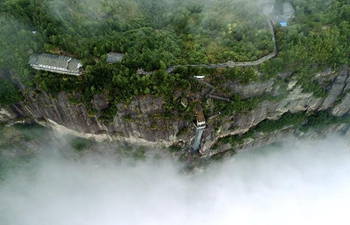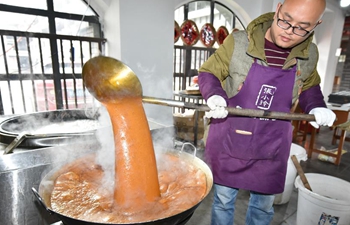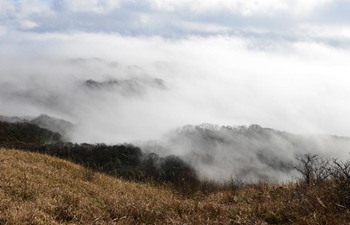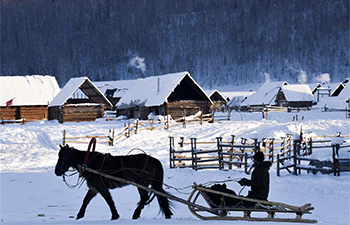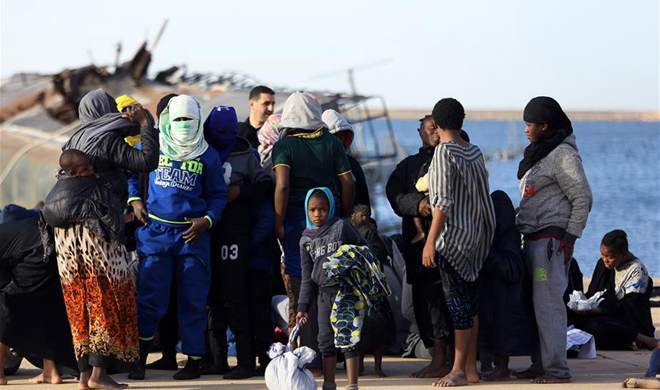HAVANA, Jan. 7 (Xinhua) -- As Cuba's sugar harvesting season gets into full gear, officials are concerned about the extent of the damage that last year's Hurricane Irma wreaked on one of the island's essential crops.
The hurricane, which lashed 12 of 15 Cuban provinces in early September, felled some 338,000 hectares of sugarcane, or 45 percent of the crop. Another 92,000 hectares were inundated.
State-run sugar enterprise AZCUBA has called on farmers "to not waste even a single chunk of sugarcane in the fields," and recommended they harvest the plant from below the soil "to make the most of the sugarcane we have today," the company's director of corporate communications, Liobel Perez, told reporters.
Modern Case brand sugarcane harvesters, used to cut 60 percent of the crop, are able to cut two centimeters below the topsoil without damaging the plant, he said.
"We are working very hard to apply these measures ... with the goal of saving the sugar that is concentrated above all in the stalk of the plant," said Perez.
Older Soviet-Cuban made KTP harvesters are used to cut the remaining 38 percent of the crop, and 2 percent is still cut by hand using machetes, especially where the ground is too uneven to allow machinery.
AZCUBA executives have yet to say what their production targets are for the season, but Perez recently said "it's very clear we will not meet our plans."
Cuba's once thriving sugar industry, which produced a peak of some 8 million tons in 1990, has suffered from a severe lack of funding, and today accounts for only about 5 percent of foreign revenue, though the government hopes to revive the industry.
The previous harvest season reached 1.8 million tons, 300,000 tons below target. Domestic consumption accounts for 600,000 to 700,000 tons, and some 400,000 tons a year are earmarked for shipment to China.





